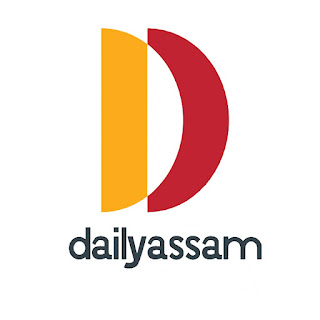Chapter 23
Elections and the electoral process
1. Write the following answer:
(a) Who elects the members of the Legislative Assembly?
Ans: The members of the Legislative Assembly are elected in a single Assembly Constituency.
(b) What does ruling party mean?
Ans: The party which gets the majority in the election forms the circle in that party. Ene party is called the ruling party.
(c) Is the country holding mid-term elections?
Ans: National mid-term elections are held in case of dissolution of the charkar due to special reasons before the term of the charkar is completed.
(d) How many years is the term of the state legislature?
Answer: The tenure of the state legislature is five years.
(e) Name two national parties?
Ans: The names of the two national parties are-
1) Bharatiya Janata Party (BJP) etc
2) Indian National Congress (Congress).
(f) Write the names of prominent regional parties of Assam.
Answer: Assam Gana Parishad (A C P).
2. Write Answer –
(a) Why the electoral process of India? describe
Ans: There are some special procedures for holding elections. After conducting various elections in India, the Center has now formed the Election Commission. This organization consists of a Chief Election Commissioner and two Election Commissioners. The Chief Electoral Officer appoints the President. State Election Commissions are formed in each of these states. The Commission prepares the date and schedule of elections in consultation with the Central and State Governments for the smooth conduct of the election work. In respect of elections, the date of submission of nomination papers, date of examination and withdrawal of nomination papers, date of declaration of election results shall be determined by the Commission. The Election Commission's guidelines are strict. Elections will be held within a certain period of time. Violators may be subject to disciplinary action. After the announcement of the election day by the Election Commission, the political parties nominate three people by competing in the local elections of their party.
(b) What are the functions of democratic political parties?
Answer: Democratic political parties are of two types. A ruling party manages the governance of the country and provides constructive advice on the khuti nati dangi style of the charkari. After the announcement of the election day, the political parties nominate the candidates by competing in the general elections of their respective parties. Political parties compete in their respective parties and hold their own joint Rajhuwa meetings with the leadership of the party to discuss the goals, objectives, and future course of action of the party. Moreover, in the context of the election campaign, the party's office went door-to-door and requested voters to vote for their candidacy. Make sure that there are no names of adults in the voter list. In his party, Karibalgiya Karmaraji announced the Hichapa of the future and distributed the power of the raiser. Some party supporters carry party symbols, banners and candidates in groups such as motchaikal and motcharikal.
(c) Which cadre controls the anti-democratic party?
Answer: Anti-democracy parties control the cadres by subverting them.
(i) Creating political awareness helps to conduct free and competitive elections.
(ii) If public welfare measures are not implemented, opposition groups criticize them and create healthy public opinion about the measures.
(iii) Advance constructive advice in the field of legislation.
(iv) Point out the mistakes with your finger, if necessary.
(v) In the case of opposition parties after the departmental ministers through the Speaker of the House.
(d) Is there a need for democratic elections? Argument.
Answer: Election is one of the aspects of democratic governance. Now elections are inevitable to form a democratic circle.
(i) Elections are an important means of expression of public opinion.
(ii) The circle can retain its control over the people through elections held at regular intervals, otherwise the ruling party will be autocratic.
(iii) Increase political awareness of the people in elections.
(iv) Citizens are benefited by taking part in the political process of the country through elections.
3. Leave the correct answer —
(a) The Vice President of India is directly/indirectly elected.
Answer: Indirectly.
(b) The number of members of the Lok Sabha is 545 / 126.
Answer: 545 people.
(c) Telugu Desam Party It is regional / national party.
Answer: Regional teams.
(d) By appointing the Chief Minister as Governor/President.
Answer: Governor.
(e) The tenure of the Legislative Assembly is 7 / 5 years.
Answer: 5 years
4. Scribbled —
(a) Universal adult suffrage.
Answer: Universal adult suffrage system gives voting rights to all citizens of the country above a certain age. In this field, language, religion, caste, gender, rich-poor discrimination do not exist. All citizens of India above the age of 18 can vote.
(b) Election Commission.
Answer: After conducting various elections in India, the Center has now formed the Election Commission. This organization consists of a Chief Election Commissioner and two Election Commissioners. The Chief Electoral Officer appoints the President. State Election Commissions are formed in each of these states. The Commission prepares the date and schedule of elections in consultation with the Central and State Governments for the smooth conduct of the election work. In respect of elections, the date of submission of nomination papers, date of examination and withdrawal of nomination papers, date of declaration of election results shall be determined by the Commission.
(c) Political parties.
Answer: A political party is a group of people organized by ummahtiya bhavdhara and trying to seize power by taking the electoral part. There are two types of democratic political parties: a ruling party that runs the country's governance and an anti-communist party that provides constructive advice to the caucus.





